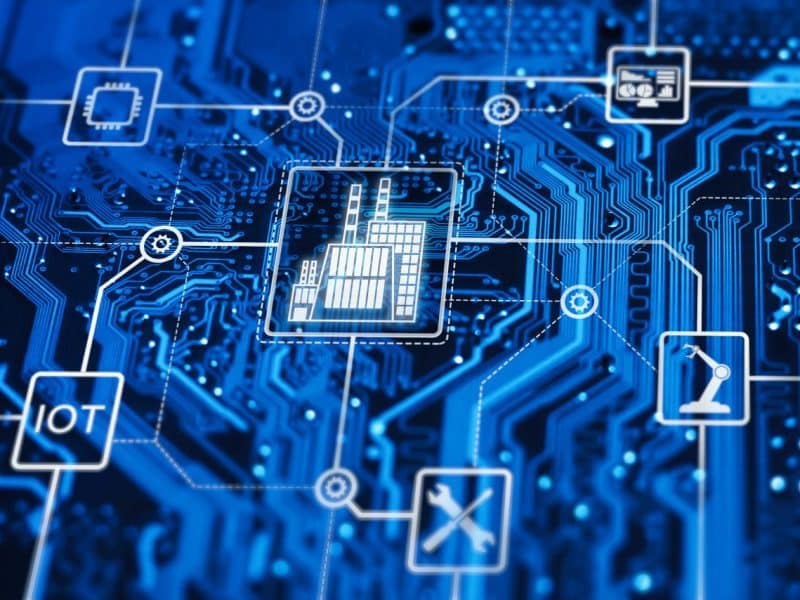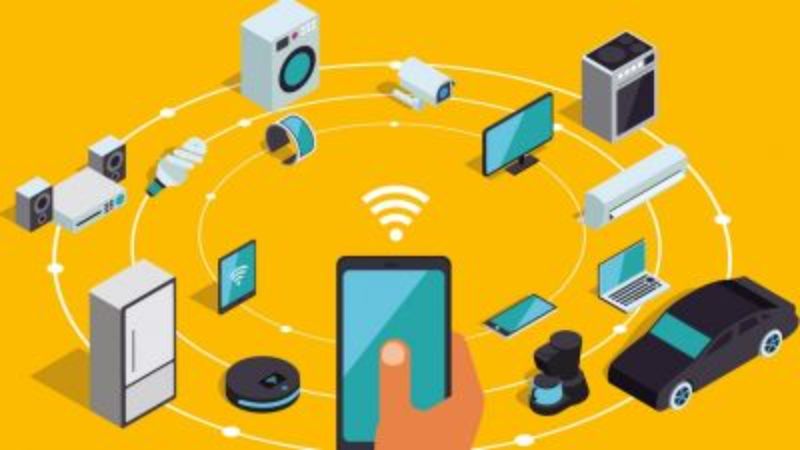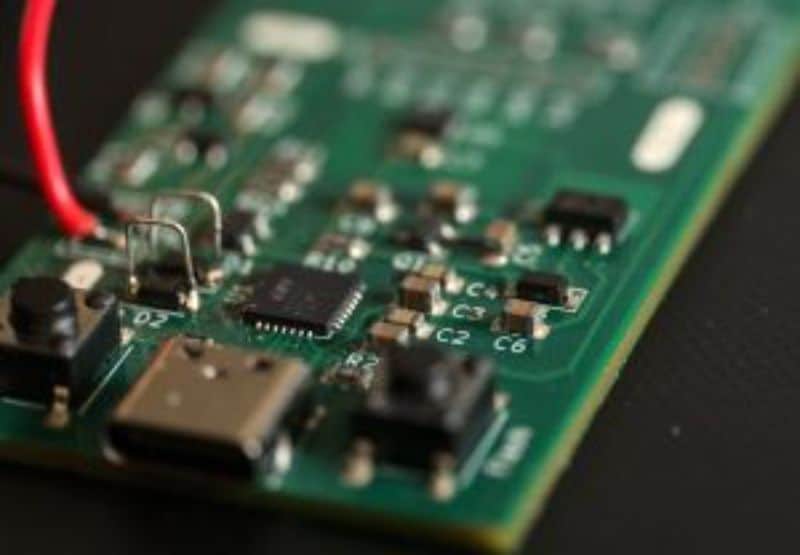
The world of technology is rapidly advancing, and one of the most transformative developments is the Internet of Things (IoT). IoT applications span across various industries, from smart homes and cities to precision agriculture and industrial automation. At the core of any IoT implementation are sensors and IoT devices. These components collect essential data, enabling IoT systems to function seamlessly.
In this blog post, we will delve into the importance of selecting a sensor or IoT devices for your project. Making informed choices is critical for the success of any IoT venture. We will explore ten essential factors that engineers and IoT enthusiasts must consider when choosing sensors. These factors will help you make sound decisions, ensuring that your IoT project is not only functional but also efficient, reliable, and cost-effective.
Understanding IoT Sensors
Before we dive into the factors to consider when selecting a sensor for IoT applications, it’s crucial to understand the role of IoT sensors and their diversity. IoT sensors are devices that detect and measure physical properties such as temperature, pressure, motion, light, or environmental conditions. They are the eyes and ears of IoT systems, capturing data that drives decision-making and automation.
IoT sensors come in various types, each suited for specific applications. For instance, temperature sensors are commonly used in climate control systems, while motion sensors are vital for security and automation. The significance of understanding these differences is that making the right choice can significantly impact the performance of your IoT solution.
10 Important Factors to Consider When Selecting a Sensor or IoT Device
Factor 1: Sensor Type
The first factor to consider when selecting a sensor for your project is the type of sensor that best suits your application. Different IoT applications require various sensor types, each designed to excel in a particular area. Here, we’ll explore the most common sensor types and their respective applications.
- Temperature Sensors: These sensors measure temperature and are used in climate control systems, weather stations, and cold chain management.
- Pressure Sensors: Pressure sensors are vital in applications like industrial automation, tire pressure monitoring systems, and weather forecasting.
- Motion Sensors: Motion sensors detect movement and are used for security, lighting control, and occupancy sensing.
- Light Sensors: Light sensors measure light intensity and are essential in display brightness control, street lighting, and photography.
- Environmental Sensors: These sensors monitor environmental parameters such as humidity, air quality, and radiation levels, making them invaluable in smart cities and environmental monitoring.
Matching the sensor type to your specific IoT application is crucial to ensure that your project functions optimally.
Factor 2: Sensor Accuracy
Sensor accuracy is one of the paramount factors when selecting a sensor for an IoT project. The accuracy of sensor data is fundamental in ensuring the reliability and effectiveness of the entire system. Whether the project involves monitoring environmental conditions, tracking assets, or measuring energy consumption, precise and accurate sensor measurements are imperative for meaningful data analysis and informed decision-making.
Accurate sensor data serves as the foundation upon which actionable insights are built. The value of IoT projects lies in their ability to collect and process data to derive insights that can drive improvements and efficiencies. Inaccurate sensor data can lead to incorrect conclusions and misguided actions, potentially rendering the entire IoT project ineffective.
To select sensors with the right level of accuracy, engineers must comprehend how to assess and compare sensor accuracy metrics. Sensor datasheets provide specifications such as resolution, precision, error rates, and calibration methods. Engineers need to interpret these metrics to evaluate sensor accuracy effectively.
Calibration plays a significant role in achieving and maintaining sensor accuracy. Calibration involves the process of adjusting and fine-tuning sensors to ensure their measurements are as accurate as possible. This can be performed during the sensor manufacturing process or on-site in the field. In some cases, compensation techniques may also be employed to mitigate inaccuracies and drift in sensor measurements, allowing for ongoing accuracy even in changing conditions.
Applications vary in terms of the accuracy requirements for sensor data. Some applications, like medical devices or aerospace systems, demand extremely high precision. In contrast, other applications, such as monitoring room temperature, may tolerate lower precision. Engineers must weigh the specific accuracy needs of their IoT projects against the associated costs of higher-precision sensors.
Maintaining sensor accuracy over time can be challenging, as various factors can affect sensor performance. Environmental conditions, aging, and external interferences can introduce inaccuracies. Engineers need to consider these challenges and develop strategies for maintaining accuracy over the sensor’s operational lifespan.
Cost is another critical factor when addressing sensor accuracy. High-precision sensors often come with a higher price tag. Engineers must carefully balance their budget constraints with the accuracy requirements of their IoT projects. This means making informed decisions regarding the necessary level of accuracy to achieve project goals without overspending on sensor technology.
Factor 3: Power Consumption
IoT sensors are often deployed in remote or battery-powered devices. As such, power consumption is a critical factor to consider when selecting a sensor for your project. High power consumption can lead to frequent battery replacements, increased maintenance costs, and potential downtime.
It’s essential to select sensors that are power-efficient and optimized for low energy consumption. Low-power sensors extend the lifespan of battery-operated IoT devices and reduce the overall operational cost. Engineers can choose from a wide range of sensors designed specifically for low power consumption, making them suitable for long-term, autonomous deployments.
Factor 4: Connectivity Options
IoT sensors are integral components of interconnected systems, and their connectivity options play a pivotal role in data transmission. Choosing the right connectivity solution depends on various factors, including the distance over which data needs to be transmitted, the amount of data, and power efficiency.
There are several connectivity options available, each with its advantages and limitations:
- Wi-Fi: Wi-Fi offers high-speed data transmission but consumes more power. It’s suitable for applications with easy access to power sources.
- Bluetooth: Bluetooth is ideal for short-range communications and is commonly used in wearable devices and smart home applications.
- Cellular: Cellular connectivity provides broad coverage but requires more power and is suitable for applications with remote or mobile devices.
- LPWAN (Low Power Wide Area Network): LPWAN technologies like LoRa and Sigfox are designed for long-range, low-power communication, making them suitable for applications with low energy budgets.
Selecting the right connectivity option depends on the specific requirements of your IoT project.
Factor 5: Data Rate and Throughput
The amount of data generated and transmitted by IoT sensors varies widely among applications. Some IoT systems require high data rates, while others operate with minimal data throughput. Understanding the data requirements of your project is vital when choosing sensors.
IoT applications like video streaming and real-time monitoring demand high data rates. In contrast, applications like environmental monitoring or asset tracking may require lower data throughput. Selecting a sensor for your project with the appropriate data rate capabilities ensures that your IoT system efficiently handles data transmission and processing.
Factor 6: Environmental Considerations
Environmental conditions have a significant impact on sensor selection. IoT projects can be deployed in diverse settings, from controlled indoor environments to harsh outdoor conditions or industrial facilities. Selecting a sensor that can withstand and perform optimally in the intended environment is crucial.
We’ll discuss the impact of environmental factors on sensor selection and provide guidance on choosing sensors that can endure and deliver reliable data in challenging conditions.
Factor 7: Cost
One of the primary concerns when selecting a sensor for IoT projects is cost. Balancing sensor quality with budget constraints is essential. In this section, we’ll delve into strategies for identifying cost-effective sensor options without compromising essential functionalities.
Discussing the factors that influence the cost of sensors, including sensor type, accuracy, and additional features. Offering insights into how these factors can be evaluated to make cost-effective choices.
Highlighting the importance of comparing different sensor vendors and their pricing. Offering tips on researching reputable vendors and making informed decisions based on cost and sensor performance.
Factor 8: Power Supply
Exploring the various power supply options for IoT sensors. This section will cover the essential aspects of powering sensors, including battery life, energy harvesting, and external power sources. Readers will gain insights into the trade-offs associated with each power supply option.
Discussing the significance of battery life in IoT sensor devices. Providing recommendations on selecting a sensor that offer a balance between power consumption and extended battery life. This section will also cover tips for conserving power when using battery-powered sensors.
Introducing readers to energy harvesting technologies, such as solar cells and kinetic energy harvesting. We’ll discuss the potential of energy harvesting to power sensors efficiently and its impact on sensor selection.
Factor 9: Sensor Calibration and Maintenance
Sensor calibration is a critical factor in ensuring accurate data collection. This section will emphasize the importance of calibration for maintaining sensor accuracy and reliability. We’ll explain the calibration process and how it impacts data quality.
Readers will learn the importance of sensor maintenance to ensure long-term functionality. Providing practical tips and best practices for maintaining sensors, including regular checks, cleaning, and calibration schedules. We’ll discuss how proper maintenance contributes to the longevity of IoT sensor devices.
Introducing readers to the tools and resources available for sensor calibration and maintenance. Explaining how these tools can aid engineers and users in ensuring sensors perform optimally throughout their lifespan.
Factor 10: Sensor Integration
The tenth factor, sensor integration, is crucial for the successful implementation of IoT devices. It involves the strategies and considerations for seamlessly incorporating sensors into IoT devices, ensuring compatibility with microcontrollers, and managing the data processing aspect.
This section will explore various strategies for integrating sensors into IoT devices. It will discuss considerations such as physical placement, connection interfaces, and communication protocols. Readers will gain insights into how the choice of integration methods can impact the overall performance and functionality of IoT systems.
Discussing the importance of ensuring compatibility between selected sensors and the microcontrollers or processing units used in IoT devices. Readers will learn how to identify sensors that can communicate effectively with specific microcontrollers, minimizing integration challenges.
Exploring the data processing aspect of sensor integration, including data collection, transmission, and storage. Discussing the role of IoT platforms and data management systems in handling the information generated by sensors. Providing tips on selecting a sensor that align with the data processing capabilities of the IoT ecosystem.
Highlighting the significance of testing and validating the integrated sensor systems. Readers will gain insights into the testing procedures and protocols necessary to ensure that integrated sensors function as intended. This section will emphasize the role of testing in identifying and resolving integration issues.
Addressing the scalability of sensor integration to accommodate future expansions or upgrades in IoT projects. Discussing the concept of future-proofing IoT devices by selecting a sensor that can adapt to evolving technology and application requirements.
The Role of PCB Design in Sensor Integration
Significance of PCB Design
Highlighting the role of PCB (Printed Circuit Board) design in IoT sensor integration. Effective PCB design ensures that sensors are seamlessly incorporated into your IoT devices, facilitating accurate data collection and efficient communication.
Optimizing PCB Layout
Discussing how a well-structured PCB layout can enhance sensor performance and minimize interference. Providing insights into best practices for PCB design to accommodate sensors while maintaining signal integrity.
IoT Device Miniaturization
Exploring how PCB design plays a crucial role in compact IoT devices, ensuring sensors are placed optimally for efficient use of space. Discussing how miniaturization impacts sensor selection and placement.
PCB Manufacturing Considerations
Addressing considerations when selecting a PCB manufacturer for your IoT devices. Factors such as quality, cost, and lead times can affect sensor integration.
Conclusion
As we conclude this blog post, we’ll summarize the key takeaways from the ten factors to consider when selecting a sensor or IoT devices. We’ll reinforce the importance of informed sensor selection in ensuring the success of your IoT project. Finally, we’ll touch on the promising future of IoT and the pivotal role that sensors will continue to play in shaping that future.
Stay tuned for the complete blog post, where we’ll explore each of these factors in greater detail, providing engineers and IoT enthusiasts with valuable insights into the art of selecting the right sensors for their projects.



